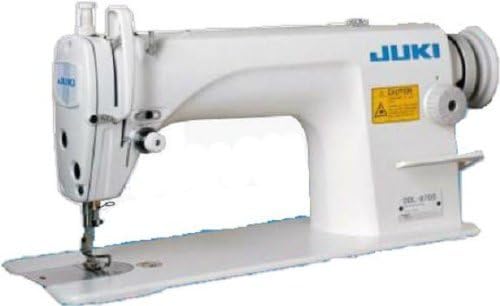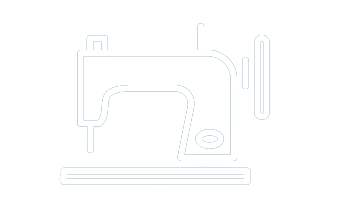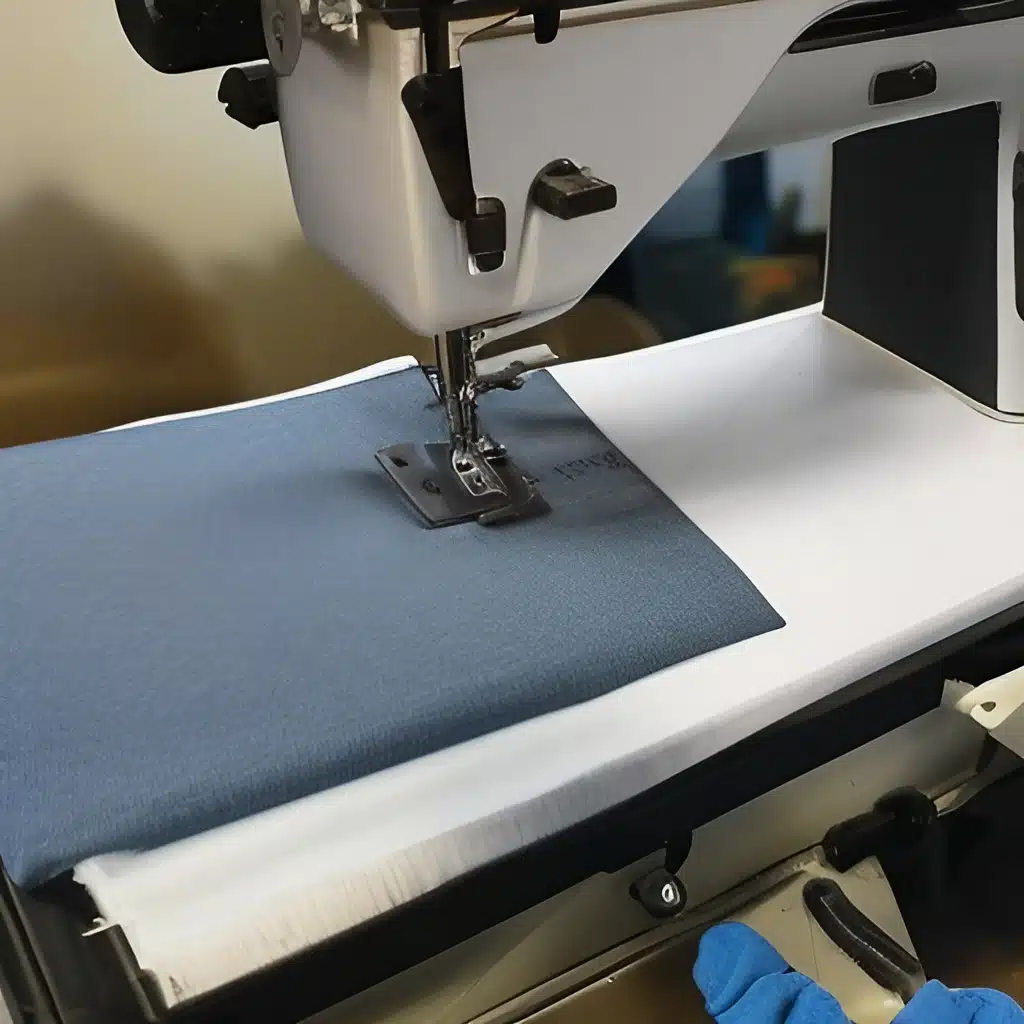Best Sewing Machine For Automotive Upholstery
Automotive upholstery projects involve working with thick and tough fabrics like leather, vinyl, and canvas, which require a sewing machine that can handle these materials. Choosing the right sewing machine is crucial for achieving professional-looking results and ensuring the durability of the finished product.
There are several factors to consider when selecting a sewing machine for automotive upholstery projects, such as the type of machine, its features, and its power and speed. Understanding these factors will help you make an informed decision when choosing a sewing machine that meets your needs and budget. In this guide, we will explore the different types of sewing machines for automotive upholstery, the features to look for, and the top recommended machines to help you make the best choice for your next upholstery project.
Top picks of best sewing machine for automotive upholstery
JUKI DDL-8700
One of the most well-known industrial sewing machines, this machine has a powerful motor and is suitable for all types of automotive upholstery. It’s fast and accurate stitching combined with its durability make it an ideal choice for tackling any sized project.
JUKI DDL-8700

Features
- Straight stitch industrial sewing machine
- The maximum stitching speed is 5,500 stitches per minute
- Comes with a servo motor for precise speed control
- Has an automatic lubrication system to keep the machine running smoothly
- Adjustable presser foot pressure
Pros
- High-speed stitching capability makes it a fast and efficient option for industrial sewing projects
- Durable construction and sturdy design ensure longevity and reliability
- Servo motor provides precise control and speed adjustment
- Adjustable presser foot pressure allows for flexibility in handling different types of fabrics
- Compatible with a range of needle sizes and thread types
Cons
- Only performs a straight stitch, limiting its versatility for some projects
- No automatic thread cutter, which can be time-consuming for large projects
- Some users may find the machine noisy or vibration-prone at high speeds
- Requires a separate table and motor, which can increase the overall cost of the machine.
Singer 4423 Heavy Duty
The Singer 4423 Heavy Duty Sewing Machine is a popular choice for those who need a machine that can handle tough projects such as automotive upholstery.
Singer 4423 Heavy Duty

Features
- 23 built-in stitches, including basic, stretch, and decorative stitches
- Automatic needle threader for easy threading
- Top drop-in bobbin with clear cover for easy monitoring of thread supply
- Adjustable presser foot pressure for sewing through different types of fabrics
- Adjustable stitch length and width for customizing stitch size
- Heavy-duty metal frame for durability and stability
- Extra-high stitching speed which is about 1,100 stitches per minute
- 60% stronger motor than standard sewing machines
Pros
- Capable of sewing through multiple layers of thick fabric
- Fast sewing speed for efficient sewing
- Easy to use and set up
- Affordable price for a heavy-duty machine
- Reliable performance for most sewing projects
Cons
- Some users have reported issues with the tension and thread breaking
- Limited number of built-in stitches compared to other machines in its class
- Can be loud and vibrate during use
- The automatic needle threader may not work well with thicker threads
Singer 4411 Heavy Duty
This robust machine can handle thick fabrics used in automotive upholstery with ease and features an adjustable presser foot pressure control plus an automatic needle threader that makes set-up time quick and easy.
Singer 4411 Heavy Duty

Features
- Heavy-duty metal frame for durability and stability
- High-speed stitching of up to 1,100 stitches per minute
- Adjustable presser foot pressure for handling different fabric thicknesses
- 11 built-in stitches including basic, decorative, and stretch stitches
- Top drop-in bobbin system for easy loading and monitoring of thread supply
- Adjustable stitch length and width for customization
Pros
- Affordable option for those on a budget
- Fast and efficient sewing with high-speed stitching capability
- Sturdy construction ensures stability and longevity
- Multiple stitch options for versatility in sewing projects
- Easy to load and monitor the bobbin
- Adjustable stitch length and width allows for customization
Cons
- Limited stitch options compared to more advanced sewing machines
- No automatic thread cutter, which can be inconvenient for some users
- Some users have reported difficulty with the tension adjustment, requiring some practice to get it right
Janome HD3000
Offering 18 built-in stitches, the Janome HD3000 is ideal for those starting out in automotive upholstery as it is both user-friendly and versatile. Plus its variable speed control allows you to adjust your speed depending on the type of project you’re working on.
Janome HD3000

Features
- Heavy-duty construction for durability and stability
- 18 built-in stitches, including a one-step buttonhole
- Adjustable presser foot pressure and stitch length
- Free arm for sewing cuffs and sleeves
- Automatic needle threader
Pros
- Can handle thick fabrics such as leather and denim
- Easy to use, even for beginners
- High-quality stitching for professional-looking results
- Quiet operation
- Comes with several useful accessories, including extra needles, bobbins, and a seam ripper
Cons
- No automatic thread cutter
- Limited stitch selection compared to other models
- Heavier than some other sewing machines, which can make it less portable
Consew 206RB-5
The Consew 206RB-5 Industrial Walking Foot Sewing Machine is a heavy-duty machine that is designed for industrial applications and can handle thick and heavy materials such as leather, canvas, and vinyl.
Consew 206RB-5

Features
- Compound feed walking foot mechanism for even feeding of materials
- Large vertical axis hook and bobbin for efficient thread management
- Adjustable stitch length and reverse stitching for customization and reinforcement of seams
- Adjustable presser foot pressure for sewing through various fabrics
- Safety clutch mechanism to prevent damage to the machine and material in case of thread jams
- Heavy-duty construction with a cast-iron frame for stability and durability
- Maximum sewing speed of 3,000 stitches per minute
- Comes with a table and motor for industrial use
Pros
- Capable of sewing through thick and heavy materials with ease
- Provides precise and even stitching due to its walking foot mechanism
- High sewing speed for fast and efficient work
- Durable and built to withstand heavy usage
- Suitable for both industrial and home use
Cons
- Expensive compared to other sewing machines
- Large and heavy, which may require more space for use and storage
- No automatic needle threader, which may make threading more time-consuming
- Not suitable for lightweight fabrics or delicate projects
Janome HD1000
The Consew CP206RL Portable Walking Foot Sewing Machine is a lightweight and portable machine that is specifically designed for heavy-duty sewing tasks such as automotive upholstery. This machine is popular among professionals in the industry due to its versatility and reliability.
Janome HD1000

Features
- Adjustable stitch length and width
- Heavy-duty construction
- Built-in needle threader
- Reverse stitch function
- Adjustable presser foot pressure
Pros
- Affordable
- Durable and reliable
- Easy to use
- Versatile for various fabrics
Cons
- Limited workspace
- Lower stitching speed compared to industrial machines
Types of Sewing Machines for Automotive Upholstery
When it comes to sewing machines for automotive upholstery, there are three main types to consider: industrial sewing machines, heavy-duty home sewing machines, and portable sewing machines.
Industrial Sewing Machines
Industrial sewing machines are heavy-duty machines designed for continuous use in commercial settings. They are the most powerful and durable machines available and can handle the thickest and toughest fabrics with ease. They come with large motors, high-speed stitching, and large workspaces, making them ideal for large upholstery projects in automotive and marine settings.
Heavy Duty Home Sewing Machines
Heavy-duty home sewing machines are designed for sewing heavy fabrics and materials like denim, canvas, and leather. They are more affordable than industrial sewing machines and have similar features like a powerful motor, adjustable stitch length and width, and walking foot. They are suitable for small and medium-sized upholstery projects.
Portable Sewing Machines
Portable sewing machines are lightweight and compact, making them ideal for smaller upholstery projects or for those who need to move their machine around frequently. They typically have fewer features and a lower price point than industrial or heavy-duty home sewing machines. However, they can still handle basic upholstery fabrics and materials
It’s important to consider your needs and budget when selecting a sewing machine for automotive upholstery. Industrial sewing machines are the most powerful and durable, but they also come with a higher price tag. Heavy-duty home sewing machines are a great alternative for smaller projects or for those on a budget. Portable sewing machines are ideal for occasional or small-scale upholstery projects.
Why is having a reliable sewing machine for automotive upholstery important?
Automotive upholstery involves working with thick and heavy materials such as leather, vinyl, and canvas. These materials are difficult to sew using a regular sewing machine and require a heavy-duty machine that can handle the thickness and weight of the material. Having a reliable sewing machine is crucial for automotive upholstery projects as it ensures that the stitches are strong and secure, and the finished product is durable and long-lasting.
Features to Look for in a Sewing Machine for Automotive Upholstery
When selecting a sewing machine for automotive upholstery, there are several features to consider to ensure that it can handle the specific needs of the project. Here are some of the most important features to look for:
Needle Size and Type
Automotive upholstery projects require strong and durable needles that can penetrate thick layers of fabric. Look for a machine that can accommodate larger needle sizes, such as size 16 or 18, and that has a needle designed for heavyweight fabrics like leather and canvas.
Thread Type and Thickness
The type and thickness of thread used for automotive upholstery projects can vary depending on the material being sewn. Look for a machine that can accommodate heavier threads like nylon or polyester upholstery thread, and that has a large bobbin size to reduce the need for frequent thread changes.
Stitch Length and Width
Adjustable stitch length and width can provide versatility in automotive upholstery projects, allowing for different stitch types and designs. Look for a machine that offers adjustable stitch length and width, with a maximum stitch length of at least 5 mm.
Motor Power and Speed
A powerful motor and high stitching speed are essential for sewing through thick layers of upholstery fabric. Look for a machine with a motor power of at least 1 amp and a high stitching speed of at least 1,000 stitches per minute.
Walking Foot
A walking foot is a must-have feature for automotive upholstery projects. It helps feed fabric evenly through the machine and prevents shifting or puckering of the fabric.
Reverse Stitching
Reverse stitching is necessary for locking in stitches at the beginning and end of a seam. Look for a machine with a reverse stitch function that can be easily engaged.
Adjustable Presser Foot Pressure
Adjustable presser foot pressure allows you to adjust the amount of pressure applied to the fabric, which can be helpful when sewing through different types of fabric thicknesses. Look for a machine that offers adjustable presser foot pressure.
Bobbin Size and Type
A larger bobbin size can reduce the need for frequent thread changes. Look for a machine with a larger bobbin size, such as a class 15 or class 66, and that can accommodate heavy-duty thread.
Considering these features when selecting a sewing machine for automotive upholstery can ensure that you have the right tools for the job and can achieve professional results.
Tips for sewing automotive upholstery
Understanding different types of automotive upholstery fabrics
There are several types of fabrics used for automotive upholstery, including vinyl, leather, and synthetic materials like nylon, polyester, and neoprene. Each fabric type has unique properties, so it’s important to choose the right needle, thread, and sewing technique accordingly.
Preparing and cutting fabric
Before sewing, you should prepare the fabric by washing and drying it to remove any dirt or debris. Then, use a rotary cutter to cut the fabric to the desired size and shape. It’s also important to mark the fabric with chalk or a fabric pen to ensure accurate cuts.
Sewing curves and corners
To sew curves and corners, use a smaller stitch length and go slowly. This will help to prevent puckering and ensure a smooth, even finish. You can also use a walking foot to help feed the fabric evenly.
Top-stitching
Top stitching is important for reinforcing seams and adding a professional touch. To achieve clean and even top stitching, use a longer stitch length and a heavy-duty thread. Use a seam guide or masking tape to ensure straight lines.
Dealing with thick layers of fabric
When sewing through thick layers of fabric, use a heavy-duty needle and adjust the presser foot pressure to ensure the fabric is fed through evenly. You may also need to hand-crank the machine over thick areas to prevent the needle from breaking.
Overall, taking the time to choose the right materials and techniques for your automotive upholstery project will help to ensure a professional-looking and long-lasting finish.
Closing thoughts and tips for successful automotive upholstery projects
Here are some tips for successful automotive upholstery projects:
- Always use high-quality materials and tools.
- Measure and cut your materials carefully to ensure a precise fit.
- Practice on scrap materials before working on your final project to ensure that you have the correct tension and settings on your machine.
- Take breaks to avoid fatigue and maintain focus on the details of the project.
- Finally, be patient and take your time. Automotive upholstery projects can be time-consuming, but the end result will be worth the effort.
Conclusion
In conclusion, when looking for the best sewing machine for automotive upholstery, there are many options out there. From top-of-line industrial-grade machines to easy-to-use models for beginners, each one offers its own set of features and benefits so it is important to research each model carefully to ensure you choose one that meets your needs and budget. Ultimately, no matter which machine you decide on, having the right tool will make completing any project in auto upholstery both quick and effortless.

